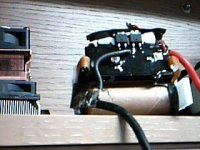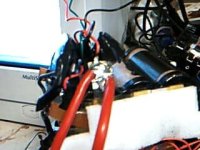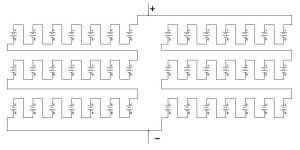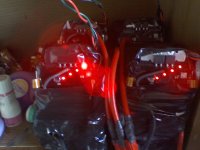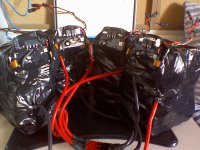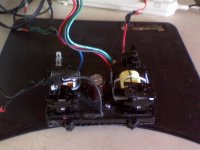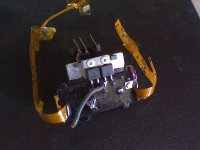lazarus2405
10 kW
Tell me more about the dropouts on your Mongoose. How wide are they, and what are they made of? Steel, or aluminum?
If they're thick steel, make sure to tighten the nut on the axle as tight as you can, and add either loc-tite or double nut it, or both. You don't want that coming loose.
If they're aluminum (or thin steel), you'll need to investigate a torque arm. That's because the aluminum will fatigue under the torque of the axle, and with these high-power setups, eventually it will fail. This will happen faster if the nuts on the axle aren't tight, so take the above precautions too. The axle can come loose, and then bad things can happen.
A little over a week ago it happened to me, at 10mph on a sidewalk. Hit a pothole, the drops finally gave way, the axle spun inside the drop, two motor phase wires were cut and then shorted. The short fried my controller beyond any repair. At the moment I'm waiting for a new one while using my leg motors instead of my hub motor.
Either way, torque arms are really a topic for another thread. Usually they're custom made because the dropouts different for each bike. (Poweridestore sells torque arms for front wheels, but they won't work on a rear).
If they're thick steel, make sure to tighten the nut on the axle as tight as you can, and add either loc-tite or double nut it, or both. You don't want that coming loose.
If they're aluminum (or thin steel), you'll need to investigate a torque arm. That's because the aluminum will fatigue under the torque of the axle, and with these high-power setups, eventually it will fail. This will happen faster if the nuts on the axle aren't tight, so take the above precautions too. The axle can come loose, and then bad things can happen.
A little over a week ago it happened to me, at 10mph on a sidewalk. Hit a pothole, the drops finally gave way, the axle spun inside the drop, two motor phase wires were cut and then shorted. The short fried my controller beyond any repair. At the moment I'm waiting for a new one while using my leg motors instead of my hub motor.
Either way, torque arms are really a topic for another thread. Usually they're custom made because the dropouts different for each bike. (Poweridestore sells torque arms for front wheels, but they won't work on a rear).


